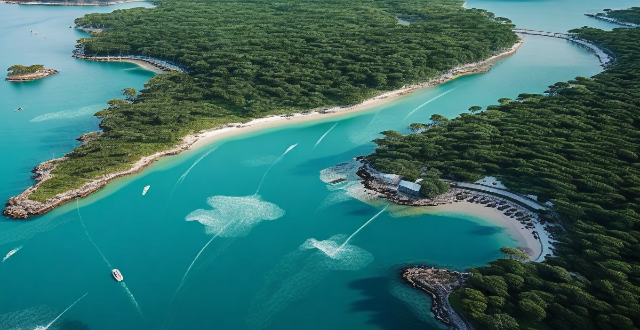Climate variability, which can be natural or human-induced, has a significant impact on the frequency and intensity of extreme weather events such as floods and hurricanes. Changes in rainfall patterns, sea level rise, and land use changes can increase the risk of flooding, while warmer ocean temperatures, atmospheric conditions, and El Niño Southern Oscillation (ENSO) can affect hurricane formation and intensity. As our planet continues to warm due to human activities, it is crucial that we take steps to mitigate the impacts of climate change and adapt to its effects on our environment and communities.

Impact of Climate Variability on Extreme Weather Events
Climate variability refers to changes in the average weather conditions over time. These changes can be natural or human-induced and can have a significant impact on the frequency and intensity of extreme weather events such as floods and hurricanes. In this article, we will explore how climate variability affects these types of events.
Floods
Floods are one of the most common and devastating types of extreme weather events. They occur when water levels rise above normal levels, causing damage to property and infrastructure. Climate variability can impact the frequency and intensity of floods in several ways:
- Rainfall patterns: Changes in rainfall patterns due to climate variability can lead to more frequent and intense storms, increasing the risk of flooding. For example, areas that typically receive low amounts of rainfall may experience higher than average rainfall, leading to flash floods.
- Sea level rise: Global warming caused by human activities has led to an increase in sea levels, which can exacerbate the effects of flooding. Higher sea levels mean that coastal areas are more vulnerable to storm surges and tidal flooding.
- Land use changes: Changes in land use, such as deforestation and urbanization, can also contribute to increased flooding risks. Deforestation reduces the ability of soil to absorb water, while urbanization can lead to increased runoff from impermeable surfaces like roads and buildings.
Hurricanes
Hurricanes are another type of extreme weather event that can be affected by climate variability. These powerful storms form over warm ocean waters and can cause significant damage to coastal communities. Climate variability can impact hurricanes in the following ways:
- Sea surface temperatures: Warmer ocean temperatures due to climate change can lead to more frequent and intense hurricanes. This is because warmer waters provide more energy for hurricanes to grow and strengthen.
- Atmospheric conditions: Changes in atmospheric conditions, such as wind shear and humidity, can also affect hurricane formation and intensity. For example, lower wind shear allows hurricanes to develop more easily, while higher humidity provides more moisture for hurricanes to feed on.
- El Niño Southern Oscillation (ENSO): ENSO is a natural climate phenomenon that occurs every few years and can impact hurricane activity. During El Niño phases, when Pacific Ocean temperatures are warmer than usual, there tends to be fewer hurricanes in the Atlantic basin. Conversely, during La Niña phases, when Pacific Ocean temperatures are cooler than usual, there tends to be more hurricanes in the Atlantic basin.
In conclusion, climate variability plays a crucial role in determining the frequency and intensity of extreme weather events like floods and hurricanes. As our planet continues to warm due to human activities, it is essential that we take steps to mitigate the impacts of climate change and adapt to its effects on our environment and communities.